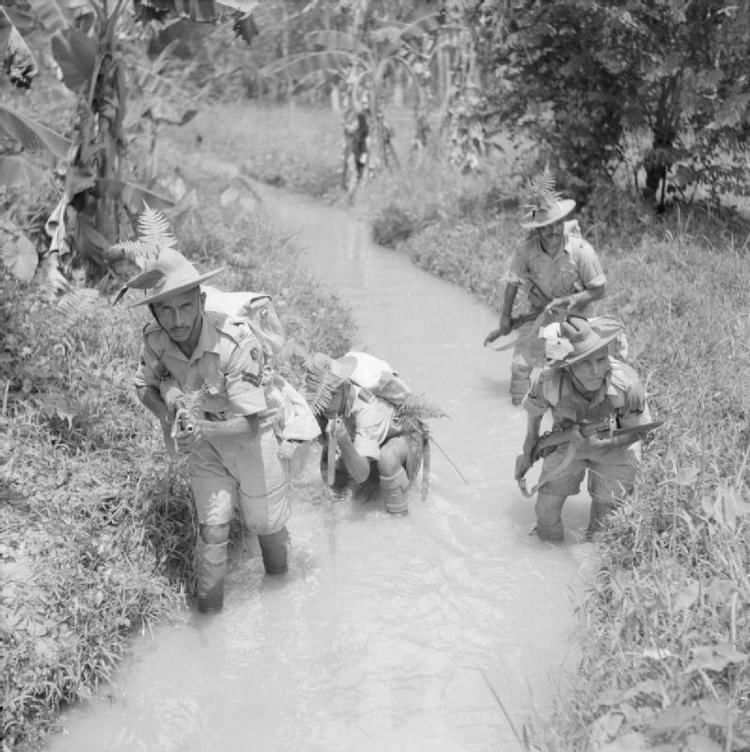Active 1817 – Present Branch Army Size 5 Battalions | Country India Type Rifles | |
 | ||
Regimental Centre Varanasi, Uttar Pradesh | ||
The 9 Gorkha Rifles is a Gorkha regiment of the Indian Army comprising Gurkha soldiers of Nepalese origin. The regiment was initially formed by the British in 1817, and was one of the Gurkha regiments transferred to the Indian Army after independence as part of the tripartite agreement in 1947. This Gorkha regiment mainly recruits soldiers who come from the Chhetri (Kshatriya) and Thakuri clans of Nepal. Domiciled Indian Gorkhas are also taken, and they form about 20 percent of the regiment's total strength. The 9 Gorkha Rifles is one of the seven Gorkha regiments of the Indian Army. The other regiments are 1 GR, 3 GR, 4 GR, 5 GR (FF), 8 GR and 11 GR.
Contents
Pre Independence
The history of the 9 Gorkha Rifles dates back to 1817, when it was raised as the "Fatehgarh Levy". In 1823, it was renamed the "63rd Regiment", and was formed as a regular unit as part of the Bengal Native Infantry. After the reorganisations that took place after the Indian Rebellion of 1857, the regiment's designation was changed to the "9th Bengal Native Infantry" with one of its companies formed by Gorkhas and the others by hillmen. By then the regiment had fought at Bhartpur and in the difficult Battle of Sobraon in the First Anglo-Sikh War.
By 1893, the regiment became a wholly Gorkha unit of Khas origin, accepting only those who were more closely linked to Hindu ways as compared to the Buddhist ways. In 1903, the regiment was designated 9th Gurkha Rifles.
9 GR fought in World War I in Europe, and in the inter war years took part in the operations on the North West Frontier. It was soldiers of the regiment under the command of Brigadier General Reginald Dyer who fired into the crowd at the Amritsar Massacre.
In World War II, the regiment's battalions fought in Malaya, Italy and North Africa. The 3/9 GR and 4/9 GR formed part of the Chindit operations in Burma, and earned a reputation in the long range penetration operations. Stafford Beer served as an officer with the regiment 1945-7.
Post Independence
India gained its independence in 1947 and 9 Gorkha Rifles was one of six Gurkha regiments (out of 10) allocated to the Indian Army as part of the Tripartite Agreement between Britain, India and Nepal. Since 1947 the regiment has fought in the 1962 Indo-China War, the 1/9 GR fought under the most demanding conditions on the Namka Chu in (Arunachal Pradesh).
The battalions of the Regiment were involved in the 1965 and 1971 wars with Pakistan.
Designations
The regiment has existed since 1817 under the following designations:
Battle honours
The battle honours of the 9th Gorkha rifles are:
